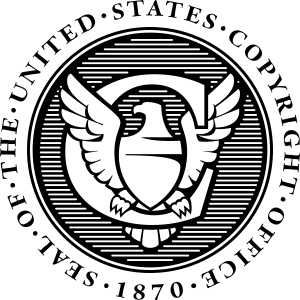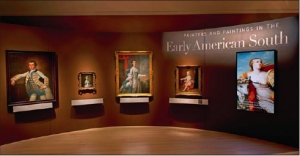|
Displaying items by tag: painters
Leading authorities in the folk art field will present talks on the themes and ideas explored in the exhibition "A Perfect Likeness": Folk Portraits and Early Photography, part of Fenimore Art Museum’s Annual Americana Series.
The exhibition, “A Perfect Likeness”: Folk Portraits and Early Photography, which opens the same day and is on view through December 31, 2015, illustrates how early photography contributed to the demise of folk portraiture in the 1840-50 period. Established painters were deeply affected by the invention of the daguerreotype and their reactions to this early photographic method varied.
New York’s Coney Island has long attracted a human merry-go-round of strivers, oddballs, hucksters, thrill-seekers, sun-worshippers—and some famous artists, too.
With its new show, “Coney Island: Visions of an American Dreamland, 1861-2008,” the Wadsworth Atheneum Museum of Art in Hartford, Conn., dives into the oceanfront playground’s role as a muse to painters, photographers, filmmakers and other artists. The museum calls the show the first one dedicated solely to art about Coney Island and the largest museum exhibition to focus entirely on the entertainment mecca in Brooklyn, N.Y. It opens Jan. 31 before starting a three-city U.S. tour.
That black speck walking precariously out on the Milwaukee Art Museum's giant white wings? That's a painter.
Matt Radmacher, owner of Wisconsin Industrial Painters, and two other painters are touching up 40 rust spots on the museum's Burke Brise Soleil — affectionately called wings — and repainting 72 rusted plates at the base.
This is only the second time the museum's addition, designed by internationally known Spanish architect Santiago Calatrava, has needed touching up since it opened in 2001. At the time, it was Calatrava's first completed American project.
The most spectacular artistic rivalry in British history will be revived in September when blockbuster exhibitions by two of the nation's most renowned painters pitch them into direct competition, just as they were in their lifetimes two centuries ago.
The simultaneous shows unavoidably provoke the question asked ever since the artists were showing side by side in the Romantic age: who is the greatest British painter ever?
Is it Joseph Mallord William Turner, whose glowing, occasionally abstract, visions of sea and sky and the violent elements are celebrated at Tate Britain from 10 September? Or is it his contemporary John Constable, whose acute observations of the clouds, trees and changing light of his native Suffolk are examined at the V&A 10 days later?
Once derided as a slavish admirer of Renoir, the painter and illustrator William Glackens is among the most intriguing and underestimated participants in the first wave of 20th-century American modernism. That perception is confirmed by the enlightening and overdue, if still deficient, survey of his dappled canvases and dazzling drawings at the Parrish Art Museum here. It should be required viewing for anyone interested in the period.
Glackens, who was born in Philadelphia in 1870 and educated at that city’s prestigious Central High School, was briefly affiliated with a loose group of urban-conscious realist painters known first as the Eight and later as the Ashcan School.

For the first time since 1992, the United States Copyright Office has re-examined its policy concerning visual artists and resale royalties. Last time the issue was explored, the Office decided that artists should not receive a share of the profits when their works are resold. However, after more than a decade, the Copyright Office has reversed its decision and is asking Congress to reconsider giving resale royalties to visual artists including painters, illustrators, sculptors and photographers.
In a report released on Friday, December 13, the Office admitted that “the current system leaves visual artists at a practical disadvantage in relation to other kinds of authors…. Because most artworks are not produced in copies, the visual artist receives a financial interest in only one work – or at best a few copies of that work. To alleviate the effects of this financial disparity, the Office believes that Congress should consider ways to rectify the problem and to further incentivize and support the development and creation of visual art.”
In the past two decades, over 70 countries have changed their policies concerning resale royalties to better serve visual artists.
Washington’s Tacoma Art Museum broke ground Thursday, September 5, 2013 on a $15.5 million expansion that will include new galleries. The 16,000-square-foot wing will house 280 works of Western art donated to the museum by German billionaires Erivan and Helga Haub. The collection, which ranks as one of the finest groupings of Western American art in the world, was accompanied by a $20 million gift from the Haubs.
The Tacoma Art Museum’s expansion, which is helmed by the Seattle-based architect Tom Kundig of Olson Kundig Architects, is slated to reach completion by fall 2014. The institution will boast the most significant public holding of Western artworks in the Pacific Northwest. The Haubs’ bequest includes landscapes by Albert Bierstadt and Thomas Moran, sculptures by Frederic Remington and works by modernist painters including Georgia O’Keeffe. The pieces range from the 1820s to the present and span various Western art genres.

The two leading decorative arts institutions in the South are embarking on a new level of collaboration between their organizations. The Art Museums of Colonial Williamsburg (the Abby Aldrich Rockefeller Folk Art Museum and the DeWitt Wallace Decorative Arts Museum) and the Museum of Early Southern Decorative Arts (MESDA) at Old Salem Museums & Gardens have entered a five-year agreement for reciprocal extended loans. The museums have already collaborated on the recently opened exhibition, Painters and Paintings in the Early American South (on view through September 7, 2014) at the Arts Museums of Colonial Williamsburg. With nine major paintings MESDA is the largest single lender to the exhibition, while select objects from the Art Museums of Colonial Williamsburg are already on display at MESDA.
Many of MESDA’s forty objects on loan to Colonial Williamsburg will be featured in a new, long-term exhibition opening at Colonial Williamsburg’s DeWitt Wallace Decorative Arts Museum in January 2014. A Rich and Varied Culture: The Material World of the Early South will feature materials made in or imported to the South before 1840. The two museums have already begun discussions on several ways in which they can broaden the collaboration. Ideas include research exchanges, conservation, joint exhibitions and, potentially, joint publications. Further evidence of the collaboration will be seen in Colonial Williamsburg’s 66th annual Antiques Forum, February 14–18, 2014. Tentatively titled “New Findings in the Arts of the Coastal South,” the program will feature multiple speakers from both institutions as well as a number of experts from museums and universities across the nation.
IN ADDITION
This May MESDA honored Richard Hampton Jenrette with the first ever Frank L. Horton Lifetime Achievement Award for Southern Decorative Arts. A native of Raleigh, North Carolina, during the past forty years Jenrette has owned and restored a dozen historic properties. He has retained six of them and furnished each with period antiques, many original to the houses. Threads of Feeling, on view at the DeWitt Wallace Decorative Arts Museum, Colonial Williamsburg, through May 2014, displays the Foundling Hospital of London’s eighteenth century record books that retain textile tokens used to identify babies left in its care. The exhibit and catalogue provide insight into social and textile history and is the only American venue. October 20–22, 2013, Williamsburg will host a symposium to explore the objects in context. For information on the institutions, exhibitions, and symposium, visit colonialwilliamsburg.com and mesda.org.

England’s Ashmolean Museum has acquired one of the most important Pre-Raphaelite paintings remaining in private hands. John Everett Millais’ (1829-1896) portrait of John Ruskin, the leading English art critic of the Victorian era, has been on loan to the institution since January 2012. The work was officially given to the museum by the Art Council England under the Acceptance in Lieu of Inheritance plan, which stipulates that under British tax law debts can be written off in exchange for objects of national significance. The painting recently appeared in Tate Britain’s highly successful exhibition Pre-Raphaelites: Victorian Avant-Garde.
Millais, one of the founders of the Pre-Raphaelite brotherhood, was commissioned to paint the portrait in 1853 by Ruskin himself. While working on the painting, Milliais fell in love with Ruskin’s wife, which ultimately led to the breakdown of the Ruskins’ marriage, Millais’ friendship with Ruskin, and the artist’s involvement with the Pre-Raphaelite movement. After marrying Ruskin’s wife, Effie, Millais gave the portrait to a friend in Oxford, Henry Wentworth Acland. The portrait remained in Acland’s family until his descendants sold it at Christie’s in 1965, where the late owner of the painting purchased it.
The Pre-Raphaelite Brotherhood, which formed in 1848, was a group of English painters, poets, and critics who rejected the traditional approaches to art and painting established by the Mannerist artists who succeeded Raphael (1483-1520) and Michelangelo (1473-1564). Instead, the Pre-Raphaelites turned to medieval and early Renaissance art for inspiration often painting subjects from Shakespeare and the Bible. Pre-Raphaelitism, which rattled Britain from 1848 to 1900, was considered the country’s first avant-garde movement.
Serbian police recovered Rembrandt’s (1606-1669) Portrait of a Father on Tuesday, March 12, 2013, seven years a after it was stolen from the Novi Sad City Museum located in the northern city of Novi Sad. Police arrested four people in connection to the 2006 heist that involved three other paintings including a work by the Flemish Baroque painter Peter Paul Rubens (1577-1640), a 17th century piece by the Italian Baroque painter Francesco Mola (1612-1666), and another painting from the 16th century by an unknown German-Dutch artist.
Rembrandt, one of the greatest painters and printmakers in European art history, painted Portrait of Father in 1630 and it is estimated to be worth around $3.7 million. The painting was stolen 10 years prior to the 2006 robbery, but it was eventually recovered in Spain.
None of the other works involved in the Serbian heist have been found.
|
|
|
|
|